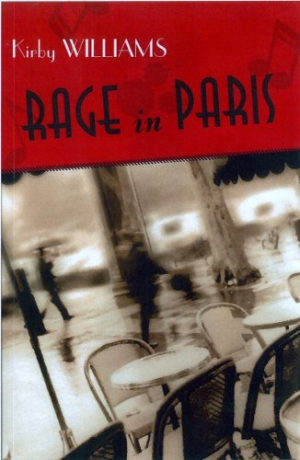Rage in Paris
Anger against racism, violence, and political corruption serves as backdrop to this fast-paced historical novel.
Kirby Williams’s first novel, Rage in Paris, offers an intricate tale of romance, mystery, and class struggle. Fueled by hard-drinking jazz musicians of the Parisian nightclub scene in 1934, the action unfolds at a dizzying pace.
Right-wing elitists in France, influenced by the growing power of Nazism, perpetrate street fighting against working-class Parisians. Having endured racial tyranny while living in the United States, Negro expatriates understand the threat to their freedom posed by those bigoted groups. In this milieu, Urby Brown, a gifted clarinetist who has lost his creative drive, subsists as a private detective. When wealthy American Barnet Robinson II asks Urby to find his kidnapped daughter, Daphne, Urby agrees, even though he distrusts Robinson’s condescension toward his mixed-race heritage.
The story is structured around diverse but intertwined elements, such as the identity of Daphne’s true father and the reason for her abduction, which changes meaning as opposing sides vie for control. Daphne’s grandiose plans for herself morph with equal frequency.
Urby and his musician friends come to life with appealing complexity. Accustomed to harsh treatment, they return violence with equal measure but exhibit deep loyalty to friends. When Urby asks fellow musician Stanley Bontemps for advice about the Robinson case, he questions his friend’s idea of turning Daphne’s disappearance to their advantage. Stanley waves his “reefer” at Urby, saying, “I be talkin’ ‘bout you getting’ yo’ just deserves for solvin’ a hard case with lots a angles. We not talkin’ kidnappin’ here; we talkin’ adduction.”
A parallel plot explores Urby’s origins as the child of a “quadroon whore” in New Orleans and a Frenchman who abandons her. Urby’s search for Daphne leads him to his father, a French count whose ultra-conservative agenda opposes Urby’s own liberal outlook. The count’s secret plans for Urby add another layer of conflict.
Williams effectively depicts the tensions roiling Europe between the two world wars and includes historical personages and events in the narrative. Rich descriptive detail enlivens both interior and exterior scenes of Paris and Berlin. Told primarily from Urby’s perspective, the point of view changes to close third-person in his absence. The fates of characters are neatly concluded as the book ends.
Those interested in a fast-moving account of the volatile issues in 1930s Europe will enjoy the book.
Reviewed by
Margaret Cullison
Disclosure: This article is not an endorsement, but a review. The publisher of this book provided free copies of the book to have their book reviewed by a professional reviewer. No fee was paid by the publisher for this review. Foreword Reviews only recommends books that we love. Foreword Magazine, Inc. is disclosing this in accordance with the Federal Trade Commission’s 16 CFR, Part 255.

